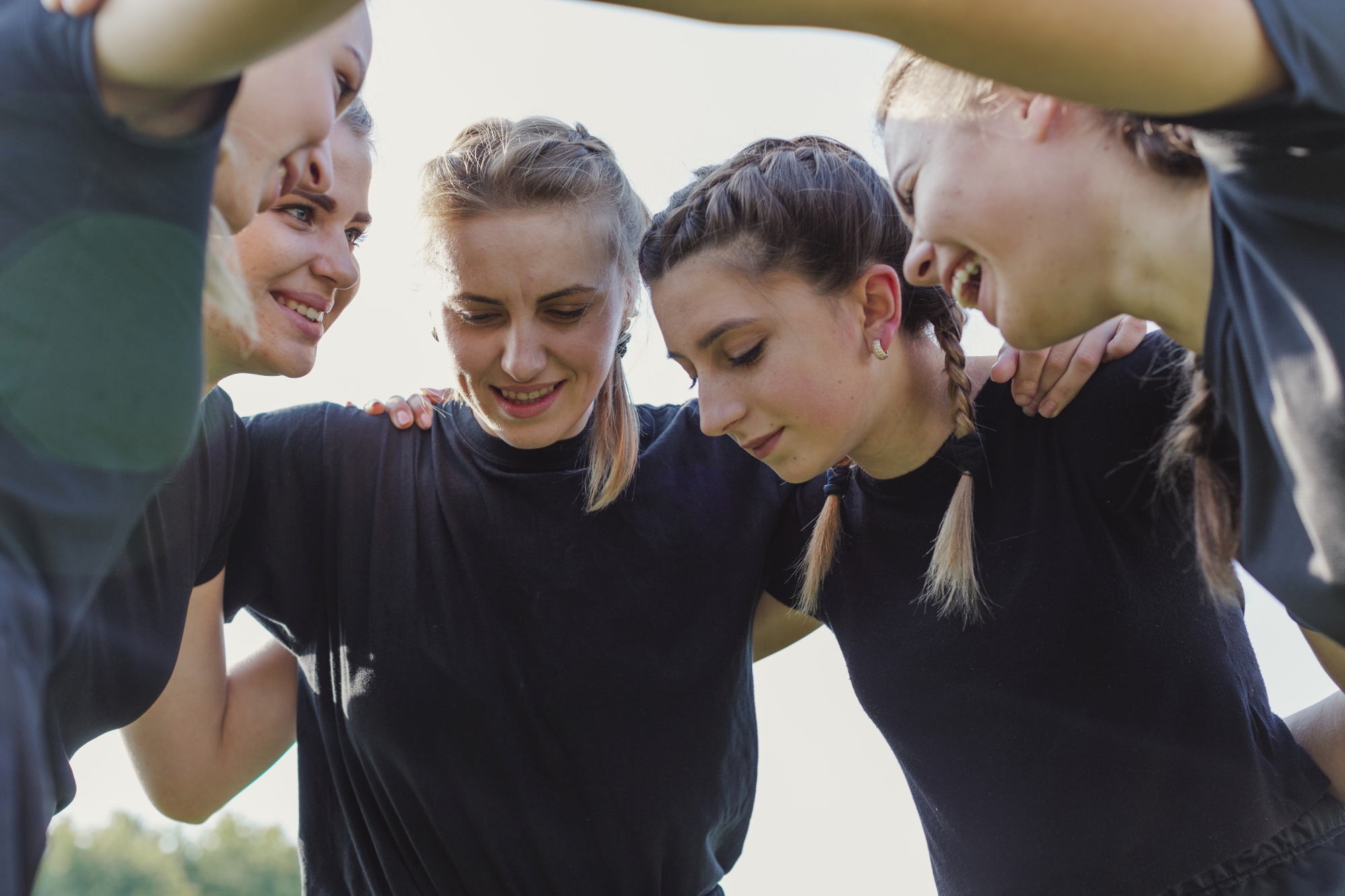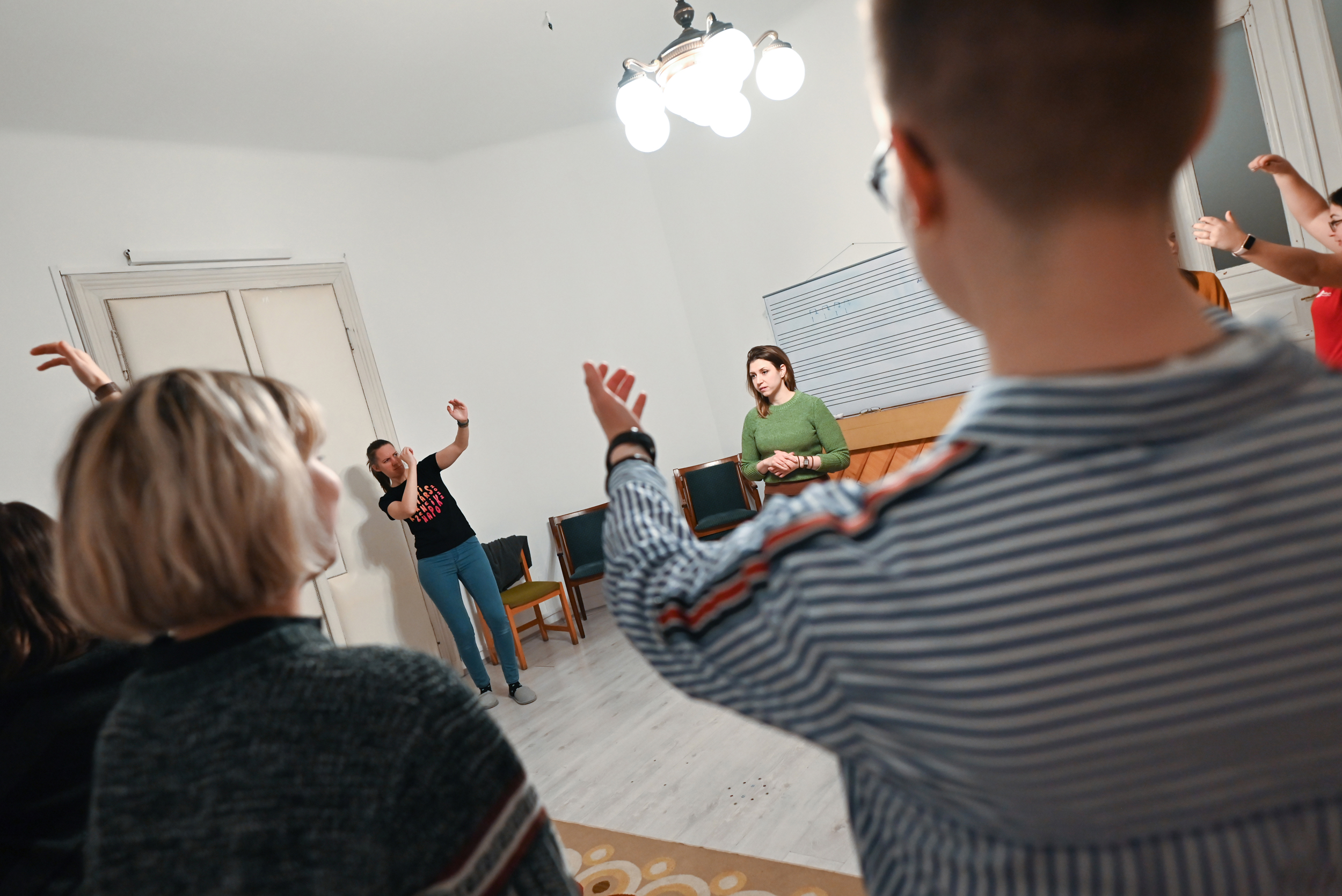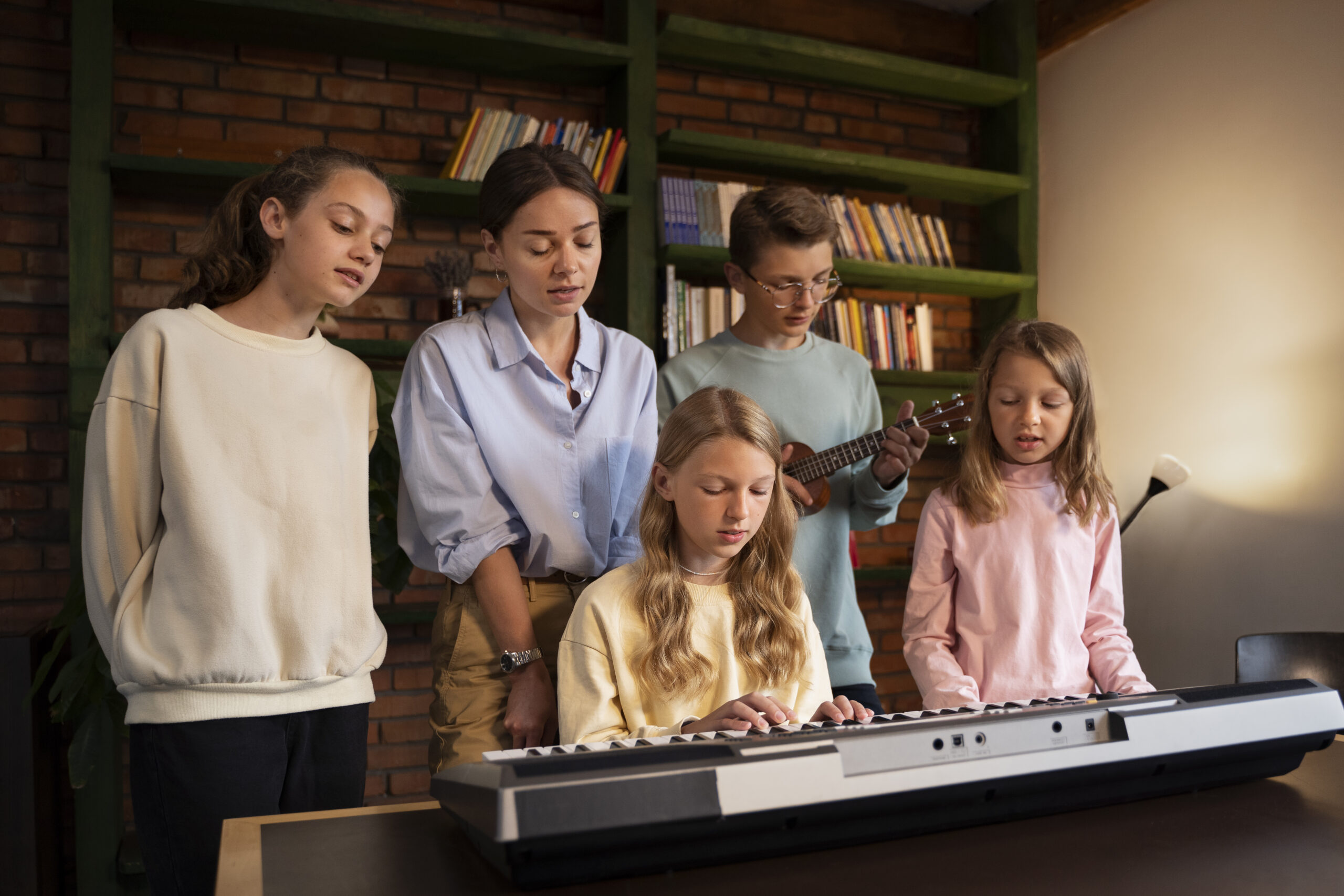by immusic | Nov 29, 2022
Category
vocal
rhythmic
Age
12-25
Number of participants
8-12
Duration
approx. 35 min.
Working method
Musical abilities of the trainers
1 2 3 4 5 6
Equipment
and instruments
- optional: percussion instrument
- music player / app
to play the song
Competences
- collaboration
- attention
- concentration
- movement coordination
- sense of rhythm
Circle Round the Zero
This activity is generally a warming-up exercise, this funny game
is useful as it gives the participants the opportunity
to get to know each other
AIM
The main objectives of these music activities are to introduce participants to the joy of playing and singing songs together, as well as to provide some knowledge of musical experience, understanding and enjoyment. The musical activities combine visual, auditory, and kinesthetic learning in a joyful way.
Description
Learning the melody at the beginning of the game is also important, either the leader learns this in advance, then the others learn it from her/him during the game. Or it is also possible to spend some time together learning while listening to the recording.
- Participants are standing in a circle, spaced slightly apart, one leader on the outside.
- Everyone in the circle claps the beat while singing, the instructor walks around the outside of the circle.
- At the appropriate point in the song as: ‘Back, back zero’ the instructor stands back to back with one of the players.
- At ‚Side, side zero’ he/she stands next to him/her in the circle.
- At ‚Front, front zero’ he/she stands facing the chosen participant.
- Version 1: At ‚Tap your lovin’ zero’, he taps him/her on the shoulders.
Version 2: At ‚Swing your lovin’ zero’, they swing together.
- On the next repetition, that person joins him walking around the outside of the circle. Then two play the same for the corresponding words, and so on until they run out in the circle.
Lyrics
Version 1:
Circle round the zero, Find your lovin’ zero,
Back, back zero, side, side zero,
Front, front zero, Tap your loving zero.
Version 2:
Circle round the zero, Find your lovin’ zero,
Back, back zero, side, side zero,
Front, front zero, Swing your loving zero.
comments for facilitators
During the activities be care of the steady beat.
There are countless versions of these popular songs, and they have varied in lyrics and melody over the years, so you can learn any version.
by immusic | Nov 29, 2022
Category
vocal
rhythmic
Age
12-25
Number of participants
8-12
Duration
approx. 15 min.
Working method
group work
Musical abilities of the trainers
1 2 3 4 5 6
Equipment and instruments
- optional: percussion instrument
- music player / app to play the song
Competences
- creativity
- collaboration
- attention
- concentration
- movement coordination
- rhythm recognition
- sense of rhythm
Do as I’m Doing
Singing a simple melody with movements
and rhythmic accompaniment.
AIM
The main objectives are to introduce participants to the joy of singing songs together, as well to provide some knowledge of musical experience, understanding and enjoyment. Besides developing their skills with these musical activities, participants can have a great time experiencing a flow state.
Description
It’s a simple follow me game: the participants imitate the leader while singing. Adapting to the text, we follow the instructions in the last line in movement: fast, slow, high and low.
For example: participants stand in a circle and clap in the tempo according to the lyrics. They can repeat the song with marching motions, then go back to clapping to finish song.
After a while, the leader passes the baton (for example to the person next to her/him in the circle), the point is that as many people as possible become leaders in the game.
At the beginning of the game, even learning the sounds is important, it is worth starting with simple movements. But afterwards, the imagination can be unleashed, what kind of movements we can invent while keeping the rhythm.
Lyrics
Do as I’m doing, follow, follow me,
Do as I’m doing follow, follow me.
If I do it high or low, if I do it fast or slow.
Comments for facilitators
During the activities be care of the steady beat.
There are countless versions of these popular songs, and they have varied in lyrics and melody over the years, so you can learn any version.
Percussion instruments can be used during the musical games, e.g. drums, percussion eggs, wood maracas, rhythm sticks, bells or castanets.
by immusic | Nov 29, 2022
Category
vocal
rhythmic
Age
12-24
Number of participants
8-12
Duration
approx. 35 min.
Working method
group work
Musical abilities of the trainers
1 2 3 4 5 6
Equipment and instruments
- optional: percussion instruments
Competences
- collaboration
- attention
- concentration
- movement coordination
- sence of rhythm
Rhythmic Game with Eight Notes
A rhythmic game that focuses on concentration
and at the same time develops a sense of rhythm
without being noticed.
AIM
In addition to the participants’ steady beat, this task is suitable for the development of many competencies through improvisation and quick, yet accurate reaction. It helps to develop musical skills and competencies, i.e. sence of rhythm, concentration, patience, and assistance to practising impovisative chamber music.
Description
- Participants are standing in a circle and each of them claps a quarter note at a steady beat.
- From the participant who halves this period and claps eighth notes, the process reverses and starts to move in the opposite direction.
- The participant who makes a mistake is eliminated from the game.
- The game ends when only two group members remain.
The tempo can be changed per game to a faster or slower tempo in every turn.
Comments for facilitators
Percussion instruments can be used during the rhythmic games, e.g. drums, percussion eggs, wood maracas, rhythm sticks, bells or castanets.
During the activities be care of the steady beat! The dynamics of the activities can be changeable.
by immusic | Nov 28, 2022
Category
vocal
instrumental
Age
12+
Number of participants
5-25
Duration
approx. 20 min.
Working method
group work
Musical abilities of the trainers
12 3 4 5 6
Competences
- creativity
- improvisation
- attention
- movement coordination
- cooperation
- social sensitivity
Sculpture Game
A funny game based on movement coordination and quick reaction
AIM
During the game, moving to the music, reacting quickly to silence, and turning into a statue all strengthen movement coordination, and at the same time this game is extremely enjoyable and has team-building benefits.
Description
The players line up next to each other at the theoretical starting line. Several meters in front of them, a participant is standing backwards towards them.
The aim of the game is for the participants on the starting line to reach and touch the shoulder of the lone player. Whoever achieves this wins. The player in front starts playing music (sings, plays an instrument, or even plays music from an application).
Players standing in the line can only move during the music and approach the target. However, as soon as the music stops, they must avoid all movement and become a statue.
The individual player turns quickly, as his goal is to discover who has moved into it. When the music stops, he looks back and if he sees someone moving, those participants must go back to the starting line (or they are out of the game, both versions can be played).
by immusic | Nov 28, 2022
Category
rhythmic
Age
8+
Number of participants
5-30
Duration
approx. 10 min.
Working method
group work
Musical abilities of the trainers
1 2 3 4 5 6
Equipment and instruments
- optional: any type of instrument
Competences
- movement coordination
- attention
- cooperation
- concentration
- sense of rhythm
Coordination Game
A very simple, yet tricky movement coordination game in which keeping rhythm is important.
AIM
The game develops movement coordination with a very simple tool, but at the same time it also focuses on keeping the rhythm, and also improving concentration.
Description
The participants stand up, alternately clapping and stamping during the game.
First we start with ten claps – then ten stamps (with alternating legs).
This is followed by 9 claps – 9 stamps…, etc. up to 1 clap – 1 stamp.
Here, however, the game does not end, but turns back!
Then one more clap-stamp up to 10 movements again.









Recent Comments